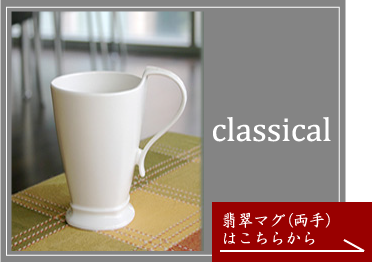フォークソング 名曲 和訳 Today Greensleeves
これもさかのぼればイギリスの風土を感じさせる名曲。懐かしいような、愛おしいような、
ありがたくも恵まれたlove と日常そのままの穏やかな優しいメロディ。
自宅で翡翠(ひすい)の 名水 をつくってみませんか?
トロンとまったりとして柔らかで甘かったりする 品格の水 です。
味わい・お茶・お酒・味噌汁などで楽しんでいらっしゃる方のヒスイウォーターリポート、
美味しいヒスイウォーターをつくるのはケータイパワースポットの翡翠マグ。
だから下の動画のような楽しい不思議もできてしまいます。
パワーの存在を明らかにする映像 は23秒から始まります。
翡翠マグに入った水道水は弱アルカリ性のイオン水になっていきます。もちろん、料理もワンランクアップ!
そしてマイナスイオンがなどが出ていて、脳内でリラックスした時に現れるアルファ波が増える
癒しの水 でもあります。
全額返金期間は商品到着から30日以内です。送料着払いでご返送ください。
トロトロになった水にやみつき & 肌がかゆくて眠れない方のヒスイウォーターリポート。
ケータイパワースポットだから・・・。
民間療法ですが 薬水 でもあります。
ステロイドが効かない方を含めてアトピー、乾燥肌、湿疹、水虫など
約70%で痒(かゆ)みがスッキリと消えます。皮膚トラブルの方は
ご注文の前に必ずヒスイウォーターの無料サンプルを
お試しください。貴重な水なので1日3名さま限定。
<飲みやすい水のヒスイウォーターリポート。
翡翠マグをご家族、ご友人らにご紹介いただいてご購入があった場合、
紹介者に謝礼として3000円を贈らせていただきます。
ネズミ講と違うのは直接、ご紹介いただいた方だけが対象で
SNSの知り合いはNG。実名・電話番号を知っている方だけでお願い
いたします。ご紹介いただいた場合、〇〇さんを紹介しますと
お名前だけ「お問い合わせ」でお知らせください。皮膚トラブルの方は
無料サンプルを請求する際、〇〇さんの紹介と症状を簡単にお書きください。
もちろん紹介なしでも、お気楽にどうぞ。
さまざまな魅力のヒスイウォーター、
フォークソングを紹介してきましたが、この曲は隠れた名曲といったところかな。
最初にサンドパイパーズ The Sandpipers の心優しいパフォーマンスを♪
3つめの動画でオリジナルの The New Christy Minstrels を。
ほかにニュー・クリスティ・ミンストレルズの グリーン・グリーン の動画
ブラザーズ・フォー の グリーンフィールズ さらに
グリーンスリーブスのメロディに基づく歌の動画もと、
風薫る五月、いいんじゃない? Green 特集^^
翻訳はサンドパイパーズを聴きながら。
オリジナルは、サビからスタートしているのですが。
わたしは粋な男でいるだろう さすらい人でいるだろう
君にはわかるだろう わたしが何者なのか わたしが歌う歌によって
あなたのテーブルでごちそうになり 満ち足りて眠る *
誰が気にするでしょう? 明日が何をもたらすかなど
今日 いまも花がツルをつかんで離さないうちに
わたしは味わおう おまえの果実(ストロベリー)を
わたしは飲もう お前の甘いワインを
★舎人独言にどんな音楽がある?を探す
ミュージックリスト(目次.クリックできます)はこちら。
百万もの明日はすべて過ぎ去るだろう
すべての喜びを わたしが忘れ去る前に
わたしのものでいるのに 今日
わたしは満たされはしない 昨日の栄光に
信じたりはしない 冬は春への約束などと
今日とはわたしのつかの間
そして今この時がわたしの物語
わたしは笑い 泣き そして眠るでしょう
今日 いまも花がツルをつかんで離さないうちに
わたしは味わおう おまえの果実(ストロベリー)を
わたしは飲もう お前の甘いワインを
百万もの明日はすべて過ぎ去るだろう
すべての喜びを わたしが忘れ去る前に
わたしのものでいるのに 今日
。
無断転載はご容赦ください。リンクはフリーです。
* in clover 贅沢さや快適さ、豊かさを楽しむという意味のイディオム。
sleep in your clover を 満ち足りて眠る と訳した。
さすらって立ち寄った先で、安らかに眠ることができる人なんですね。
歌詞全体がそうですが、当時のヒッピー文化の雰囲気を受け継いでいるようです。
母校は同じカトリック大学として東京に姉妹校があり、体育会系、文化系に限らず
それぞれのサークルが交流試合を毎年、行っていました。で、夜の懇親会で、「アメリカの
青年から素敵な歌を教えてもらいました」と言って、この歌を彼ら、合唱したんですね。
でもね、なんか、お前ら、知らないだろう?って上から目線も感じたなぁ。(ひがみ?)
でも Today ならとっくに知ってる。わざわざ偉そうに言うほどのことじゃない・・・よネ?
この心優しい曲は1964年、ニュー・クリスティ・ミンストレルズ のリーダー RANDY SPARKS
ランディ・スパークスがコメディ Advance to the Rear(邦題 うしろへ突撃! )の映画音楽
を担当したことから生まれました。
フォークミュージックというスタイルで完成された初のサウンドトラックということだそうです。
ビルボードではアダルト・コンテンポラリー部門で17位まで上昇しました。
Take Me Home, Country Roads が世界的にヒットした
John Denver ジョン・デンバー も大好きな歌だそうです。
You’ll know who I am by the song that I sing という歌詞が出てきますが、それが
あるんですねぇ。発想が似ている I’ll Know My Love (By the Way She Talks) なんて歌が。
これ、イギリスの グリーンスリーヴス Greensleeves のメロディを転用しているんです。
グリーンスリーブスって、シェイクスピアの頃にまでさかのぼる古謡なんだって。ヴォーグズです。
25の動画で紹介するウェディングソング隠れた名曲集はここから
舎人独言には
★エロスに変容するバラの寓意
★ノートルダム大聖堂の聖なる秘数
★オパキャマラドの風景
★映画「華麗なる賭け」チェスシーンのセクシーの秘密
★名盤「クリムゾン・キングの宮殿」の実在のモデル発見
★映画「男と女」サンバ・サラヴァの謎
といった解読シリーズがあります。
Green Green トゥデイより1年前のリリースで、これもスパークスの作品。
つまりニュー・クリスティ・ミンストレルズがオリジナル。
NHKの みんなのうた で取り上げられ、少年少女合唱団が
明るく元気に、健康的に歌っていました。
よい子にはお薦め?
グリーン つながりで、この曲も^^
2つ前の Try to remember で紹介した ブラザーズ・フォー の Green Fields。
もの悲しさが持ち味としても、この重々しさは・・・ねぇ。
Greensleeves グリーンスリーヴズ Celtic Ladies ケルティック・レイディーズ
この歌は本来は風刺などもこめられたバラッドかもしれません、しかし優れて音楽的で
音楽としてのバラードが確立していくことに大きく貢献しているのではないでしょうか?
日本語は清音が好きで、ハンドバッグはハンドバック、ホットドッグはホットドックに
変わってしまうけれど、グリーンスリーヴズもグリーンスリーブスと清音科しているようです。
The Folk Song Greensleeves – Its Origins and History
Updated on May 3, 2017
Origins of the Tudor Song チューダー朝の歌の起源
グリーンスリーヴズ Greensleeves
グリーン・スリーヴズと呼ばれるバラードで初めての言及として知られるのは、1580年の
9月にさかのぼる。それは明白な言及ではあるが、にもかかわらず、歌の後世への貢献としては
混乱するものだった。その月に少なくとも4つのバラードが登録されており、うち2つは同じ日
9月3日が含まれている。
印刷業のRichard Jonesリチャード・ジョーンズは、ロンドン文房具会社に「A new Northern Dittye of the Lady Greene Sleeves」 (レイディ・グリーン・スリーヴズの北方地域の小唄)
を登録した。ほとんど同時にライヴァルの印刷業者、Edward White エドワード・ホワイトが
「A ballad, being the Ladie Greene Sleeves Answere to Donkyn his frende バラード
Donkynの友へのレイディ・グリーン・スリーヴの回答として」を刊行した。その後、15日には
別ヴァージョンが刊行されている。エドワード・ホワイトは18日にはさらに別のものをリリース
している。言うまでもなく、この歌の版権は激しい論争にさらされており、Richard Jonesは
再度12月14日に刊行した。1581年にはさらに2つのヴァージョンが続いている。
Jonesは1584年、彼にとって最後のヴァージョンとなるこのメロディを刊行しており、
これが今日、われわれが知るものである。そのタイトルは「A New Courtly Sonnet of the
Lady Green Sleeves レイディ・グリーンスリーヴズの新宮廷風ソネット」であり
「A Handful of Pleasant Delights 一握の心地よきお楽しみ」という歌集を含んでいた。
この歌がさまざまHet Luitboek van Thysius に刊行されるのは間もなくのことであった。
William Ballet によるリュート教則本 Het Luitboek van Thysius を含めてであり
また1595年、オランダでの Adriaen Smoutによる楽曲集もであった。
そのほか、この歌を含む手稿はケンブリッジ大学図書館で見ることができる。
さらに1602年までにシェイクスピアの戯曲に取り入れられていることは十分に
広く知られている。「The Merry Wives of Windsor, Falstaff implores ウィンザーの
陽気な女房たち、ファルスタッフ嘆願す」の中での ’Let the sky rain potatoes!
Let it thunder to the tune of Greensleeves!
(空をして、じゃがいもの雨を降らしめよ! グリーンスリーヴズの節(メロディ)に雷鳴を
とどろかしめよ!) である。
ヘンリー8世(Henry VIII)
このグリーンスリーヴズの歌は、ほかならぬヘンリー8世による作曲と幅広く信じられている。
彼の未来の妻である Anne Boleyn アン・ブーリン が、彼の求愛を初め拒絶したことに
由来しているとのことである。報われない恋を歌うこの歌の歌詞は1520年代のアンへの
求愛に関連していると思われる。1528年、ヘンリーはアンに書いている。
‘having been for more than a year now struck by the dart of love, and being uncertain either of failure or of finding a place in your heart and affection’
Many of the verses of Greensleeves imply a rich and extravagant courtship:
‘I bought thee petticoats of the best,The cloth so fine as it might be;I gave thee jewels for thy chest’
So the idea of a royal composer for this song does have some credibility. And undoubtedly Henry VIII was a composer and musician of some merit who played the lute, organ, and virginals. But having said that, obsequious flattery did cause court officials to attribute to Henry many compositions which were not his, and the consensus of expert opinion today is that Greensleeves was composed rather later in the Tudor era, during the reign of Anne Boleyn’s daughter, Queen Elizabeth I. Not only is the song not recorded in manuscripts from Henry’s reign, but also the melody is deemed to have a style which betrays an Italian influence which only reached England after his death.
The following YouTube video uploaded by Luthval allows us to hear a variation of the song Greensleeves which is certainly not the familiar melody we know today, but it is a version from the Dutch Thysius manuscript mentioned opposite, and it is performed on the traditional lute – so this is probably the original sound intended for the song.
No one knows who penned the song, but many think it was composed by King Henry VIII for his lover and future queen consort Anne Boleyn. This is doubtful, however, since the style in which the song was composed wasn’t popular until after Henry VIII’s death. The lyrics, which were already popular around Shakespeare’s time (he references them in The Merry Wives of Windsor) have been the subject of much intellectual discourse and debate. Here’s a sample before I tell you about the debate:
Greensleeves was all my joy
Greensleeves was my delight,
Greensleeves was my heart of gold,
And who but my lady greensleeves.
Your vows you’ve broken, like my heart,
Oh, why did you so enrapture me?
Now I remain in a world apart
But my heart remains in captivity.
Scholars have long questioned the meaning of these words. According to Wiki (What? That’s scholarly, no?) “One possible interpretation of the lyrics is that Lady Green Sleeves was a promiscuous young woman and perhaps a prostitute. At the time, the word “green” had sexual connotations, most notably in the phrase “a green gown”, a reference to the way that grass stains might be seen on a lady’s dress if she had made love outside.
Whatever you think the words mean, there’s no denying
The first known references to a ballad called Greensleeves date to the month of September in the year 1580. They are clear references, but nonetheless a confusing attribution of the song’s composition. There were no less than four registrations of the ballad made that month, including two on the same day, the 3rd September.
The printer Richard Jones registered at the London Stationer’s Company the melody and lyrics of a song he described as ‘A new Northern Dittye of the Lady Greene Sleeves’. Almost simultaneously, rival printer Edward White published ‘A ballad, being the Ladie Greene Sleeves Answere to Donkyn his frende’. And then on 15th September there was another version published, and Edward White released yet another on the 18th. Needless to say the rights to the song were in very hot dispute. Richard Jones published again on 14th December. Two more versions followed in 1581. It was in 1584 that Jones printed his final version of the melody and this is the one we know today. It was titled ‘A New Courtly Sonnet of the Lady Green Sleeves’, and included in a collection of songs called ‘A Handful of Pleasant Delights’.
It was not long before the song was appearing in a variety of publications including William Ballet’s Lute Book, and , a 1595 compilation of music written by Adriaen Smout of the Netherlands. Other manuscripts which contain the song are to be found in the libraries at Cambridge University.
And by 1602, it was sufficiently widely known to be incorporated into one of William Shakespeare’s plays. In ‘The Merry Wives of Windsor, Falstaff implores ‘Let the sky rain potatoes! Let it thunder to the tune of Greensleeves! The character Mistress Ford also twice makes reference to the tune.
A widespread belief exists that the song Greensleeves was composed by none other than King Henry VIII following an early rejection of his love by his future wife Anne Boleyn. The lyrics of this song of unrequited love have been seen to relate to his courtship of Anne in the 1520s. In 1528, Henry wrote to Anne:


